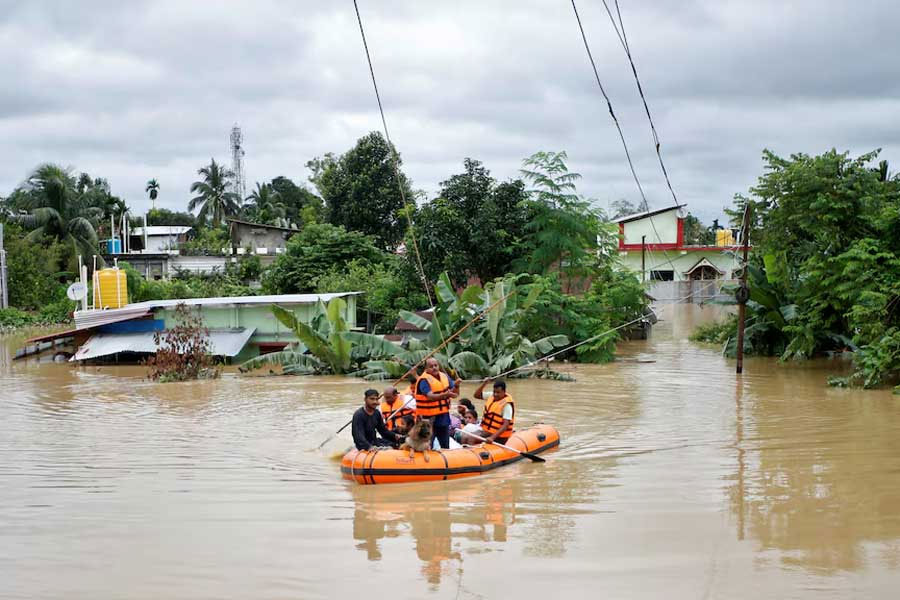
Published :
Updated :

Post-flood assessment of loss and damage suffered by the affected people, disruption caused to sources of their livelihood, homesteads, properties and infrastructure is an important part of rehabilitation work. Among the various government and private bodies, the local policy think tank Centre for Policy Dialogue (CPD), at a recent meeting with the press, came up with an assessment of the loss to lives and properties inflicted by the late August floods that devastated eastern part of the country. Based on the data collected from the government sources, NGOs and interviews of its key informants in the 11 worst affected districts including Sylhet, Moulvibazar, Habiganj, Feni, Khagrachhari, Cox's Bazar, Cumilla, Noakhali, Chattogram, Lakshmipur and Brahmanbaria, it estimated that the flood-related damage was equivalent to Tk 144.1 billon, which in US dollar comes to US$1.23 billion. This amount of money is about 1.81 per cent of the current national budget (FY2024-25) and 0.26 per cent of the projected GDP for FY25.
Notably, it is impossible to have a complete picture of the flood-damage just by monetising the loss. The suffering of the people, the emotional trauma of the victims who lost their loved ones or the shock of losing their entire investments in businesses, the crops they had grown or the savings of entire life lost to the flood cannot simply be monetised. Even so, an estimate of the economic loss provides a guideline for the government and others concerned on the resources necessary to be mobilised for helping the flood victims to rebuild their lives. The areas that suffered worst due to the floods, according to the think tank's study, were agriculture and forestry, infrastructure, housing, industry, healthcare and education respectively. Of the total amount of economic loss inflicted by the floods, agriculture and forestry, for instance, shared the highest at 35.85 per cent. The next worst affected sector, obviously, is the infrastructure, which bore 32.27 per cent of the total loss. Simple arithmetic shows that these two sectors have borne close to 70 per cent of the overall loss sustained by the entire flood-affected areas.
Needless to say, the rehabilitation effort of the government in the 11 districts that bore the brunt of the damage caused by floods should direct its focus mainly on these two sectors where the affected farmers in agriculture will require financial support, for example, to replace their livestock, seedbeds, etc. lost to the floods or for buying seeds and other agricultural inputs. If not outright government aid, they should at least have easy and encumbrance-free access to bank loans. Many of them including local small businesses often borrow money from non-bank sources including NGOs. Already burdened with debt from these sources, it would be of great help for the affected farmers and small businesses if a moratorium is imposed on payment of debts owed to different NGOs and banks by these affected people. These steps are necessary not just out of mere altruistic considerations, which, of course, are obligatory, especially for farmers. For, without protecting the agriculture's backbone, the farmers, food security of the nation is inconceivable. The government may also be required to import rice to ensure the country's food security following damage to crops.
Of course, other sectors including health and education would also require equal attention from the government for the rehabilitation of the affected people as well as the infrastructures concerned. However, mere assessment of the damage is not going to address the devastations caused to people and infrastructure. It is the necessary action that matters. Hopefully, the interim government will be equal to the task.


 For all latest news, follow The Financial Express Google News channel.
For all latest news, follow The Financial Express Google News channel.